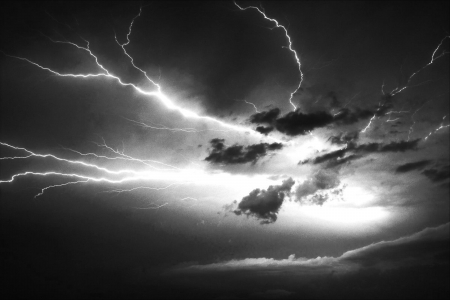Introduction: The Peculiarities of British Spring Weather
When one contemplates the British Isles, few subjects evoke as much conversation—and consternation—as the weather. Nowhere is this more apparent than in spring, a season marked by an almost theatrical unpredictability. The capricious nature of British spring weather is not merely a matter for idle chatter; rather, it weaves itself into the fabric of daily life and underpins a distinctly British approach to planning, resilience, and even humour. From dazzling sunshine to sudden downpours, from biting winds to days that promise summer only to retreat into winter’s grasp, the British spring is an enigmatic force that shapes both landscape and lifestyle. This deep-seated uncertainty has cultivated a national psyche attuned to adaptation, quick wit, and a pragmatic embrace of whatever the skies may offer. In exploring how these forecasts influence routines, rituals, and relationships across the UK, one uncovers not just meteorological phenomena but the very essence of Britishness itself.
2. Meteorological Traditions and the British Forecast
The British have long cultivated a unique relationship with their weather, elevating meteorology from mere science to an integral cultural institution. Nowhere is this more apparent than in the daily rituals that surround weather forecasting—a practice shaped by both national authority and local tradition.
The Met Office: A Pillar of National Trust
Established in 1854, the Met Office stands as a venerable institution at the heart of British meteorological life. Its forecasts are not just scientific predictions but trusted guidance woven into the fabric of everyday decision-making. From farmers planning spring sowing to urban commuters adjusting their journeys, the Met Office’s pronouncements carry weight across all corners of society.
National Forecasts Versus Local Wisdom
While official forecasts provide a backbone of reliability, local customs persist in parallel. Villages may still heed old adages—such as “Red sky at night, shepherd’s delight”—and many rely on communal knowledge passed down through generations. This interplay between institutional science and folk wisdom creates a tapestry of forecasting traditions that is distinctly British.
| Source | Typical Use | Cultural Significance |
|---|---|---|
| Met Office Broadcasts | National television, radio, digital platforms | Trusted, authoritative, informs public safety and planning |
| Local Newspapers & Noticeboards | Community events, agricultural updates | Tailored to regional concerns, reinforces local identity |
| Pubs & Village Halls | Informal conversations and communal debate | Fosters social cohesion, preserves oral traditions |
| Weather Proverbs & Sayings | Daily conversation, decision making | Links modern life with historical practices |
The Social Ritual of Weather Talk
No discussion of British meteorological traditions would be complete without mention of the nation’s famed preoccupation with weather talk. Whether queueing for a bus or greeting a neighbour over the garden fence, exchanging remarks about spring’s unpredictable skies is more than small talk—it is a subtle social ritual that binds communities together. In this way, weather forecasting in the UK transcends mere practicality; it becomes a shared language through which people navigate both the climate and each other.

3. From Wellies to Woollies: Weather and Everyday Attire
In the United Kingdom, the capricious nature of spring weather is not merely a conversational staple—it is an arbiter of daily attire and a defining force in the collective British wardrobe. The unpredictability of showers, sudden gusts, and fleeting sunshine ensures that Britons approach their closets with a blend of pragmatism and preparedness unique to these isles. As forecasts shift from balmy afternoons to brisk mornings within hours, so too do clothing choices adapt, reflecting a national ethos of flexibility and stoic readiness.
The phrase “four seasons in one day” is more than poetic hyperbole; it is a sartorial challenge met by layering—a quintessentially British strategy. Waterproof wellington boots, affectionately known as “wellies,” stand ready by countless doorways, waiting for the first hint of drizzle. Meanwhile, knitted jumpers and woollen scarves remain close at hand, regardless of what the calendar might suggest about seasonal change. This reliance on versatile staples is not only practical but symbolic of a culture shaped by meteorological uncertainty.
Spring forecasts, broadcast with reverence on morning radio or scrutinised over tea, function as daily decrees. A prediction of light rain may see offices fill with trench coats and colourful umbrellas, while unseasonal warmth prompts a cautious unveiling of lighter jackets—never quite trusting the sun to remain. Such habits speak to a deeper relationship between Britons and their environment: clothing becomes both shield and statement, an outward expression of respect for nature’s whims and an inward nod to national identity.
4. Planning and Postponement: The Art of British Social Arrangements
The British springtime is renowned for its capricious temperament, and few nations have so finely honed the delicate dance between planning and postponement. Weather forecasts are not merely consulted; they are dissected and discussed with almost scientific rigour, underpinning decisions about everything from impromptu barbecues to grand public celebrations. The unpredictability of a sudden downpour or an unexpected burst of sunshine shapes the very structure of social life across the UK.
Outdoor Gatherings and Events
Spring weather governs the rhythm of outdoor gatherings. Whether it is a family picnic in Hyde Park, a local fête in a Cotswold village, or an open-air concert in Edinburgh, plans remain tentative until the forecast is checked—sometimes repeatedly—right up to the hour before departure. The phrase “weather permitting” echoes through every invitation, signifying both hope and caution. This reliance on meteorological predictions leads to a uniquely British pragmatism: marquees are hired as insurance against rain, while alternative indoor venues are kept at the ready.
The Impact on Travel
Travel arrangements are equally beholden to the elements. Train journeys along scenic routes such as Cornwall’s coastline or the Highlands may be postponed due to storms or flooding, while weekend escapes to the Lake District hinge upon a string of dry days. The national conversation around travel plans often includes meticulous cross-examination of multiple weather apps, each offering slightly different prophecies. Below is a summary table illustrating how spring weather influences popular activities:
| Activity | Weather Considerations | Typical Response |
|---|---|---|
| Garden Parties | Rain showers, chilly winds | Tentative invites, marquee hire |
| Coastal Trips | High winds, sudden squalls | Last-minute confirmations |
| Hiking Excursions | Mist, muddy trails | Alternate routes or cancellations |
| Sports Events | Sporadic rain, wet pitches | Flexible scheduling or indoor alternatives |
Gardening: A Quintessential British Pastime
No exploration of springtime planning would be complete without mention of gardening—a pastime woven into the fabric of British culture. For many, the first signs of milder weather prompt eager trips to garden centres and allotments, yet planting schedules remain closely tied to temperature forecasts and frost warnings. Veteran gardeners know that an ill-timed cold snap can undo weeks of preparation; thus, vigilance becomes second nature.
The Social Rituals of Weather Watching
This collective attentiveness to meteorological nuance has given rise to distinct rituals: neighbours exchanging tips about when best to sow runner beans; friends swapping notes on forecast reliability; communities banding together to protect fledgling blossoms from late frosts. In all these endeavours, weather acts as both adversary and ally, shaping not only daily routines but also the subtle choreography of social interaction throughout spring in Britain.
5. Regional Variability: Spring Weather from Cornwall to the Highlands
Across the United Kingdom, spring weather is as diverse as its landscapes, painting a tapestry of climatic contrasts that shape local customs and routines. From the windswept shores of Cornwall to the brooding hills of the Scottish Highlands, regional variability in weather patterns is both pronounced and influential. In southern England, particularly along the Cornish coast, spring often arrives with a mild maritime influence. Gentle rains and early blooms signal the start of gardening season, with residents keenly watching forecasts for those coveted sunny intervals that inspire impromptu beach visits or coastal walks.
Moving northwards through the Midlands and into Yorkshire, spring brings greater unpredictability. Here, one might experience all four seasons in a single day—a phenomenon locals greet with stoic humour and layered clothing. The region’s patchwork fields awaken under fleeting sunshine and sporadic showers, shaping agricultural timetables and village life alike. Market days and outdoor events are planned with an eye on ever-changing meteorological predictions, making flexibility a valued virtue among inhabitants.
In Scotland’s vast Highlands, spring is often more reticent to emerge. Mists linger over moorland lochs while snow persists atop craggy peaks well into May. For communities scattered across these wild expanses, spring forecasts dictate everything from calving schedules for livestock to preparations for walking festivals that attract hardy adventurers. The interplay between lingering winter chill and nascent warmth defines not just daily attire but also community spirit—where every clear day is celebrated as a rare gift.
The contrasting climates from Cornwall to Caithness are more than meteorological quirks; they underpin regional identity and resilience. British weather, especially in spring, demands adaptability—whether it’s shifting weekend plans around a sudden squall or seizing a golden afternoon for a garden fête. It is this very variability that fosters a collective attentiveness to forecasts and sustains traditions rooted deeply in the rhythms of place.
6. Conclusion: Embracing the Elements
The perennial unpredictability of British weather, particularly during spring, has become both a challenge and a defining cultural motif for life in the United Kingdom. The British public’s renowned adaptability finds its roots in this capricious climate—one that demands both vigilance and flexibility from day to day. Whether it is the habitual checking of forecasts, keeping an umbrella perpetually at hand, or engaging in cheerful banter about “four seasons in one day,” these responses reveal a society finely attuned to atmospheric nuance. Spring, with its kaleidoscope of rain showers, bursts of sunshine, and sporadic frosts, stands as a microcosm of this broader meteorological dance.
Resilience Through Ritual
This adaptive spirit manifests itself not only in practical preparations but also in the rituals that characterise British daily life. From donning layered attire to scheduling outdoor events with contingency plans firmly in place, the population has woven weather-watching into the very fabric of its routines. Even the national psyche—so often associated with stoicism and understated humour—draws strength from this meteorological unpredictability. The shared experience of navigating variable spring conditions fosters a unique sense of camaraderie and collective identity.
A Celebration of Uncertainty
Rather than lamenting the absence of predictable warmth or clear skies, Britons have learned to embrace uncertainty as an invitation to creativity and resilience. Gardens bloom between showers; impromptu picnics flourish when sunlight breaks through clouds; urban streets transform with every shift in wind or drizzle. In this way, spring weather does not simply shape daily activities—it enriches them, encouraging both spontaneity and appreciation for fleeting moments of calm.
Weathering Together: A Lasting Legacy
Ultimately, the influence of British weather on springtime life is less about inconvenience and more about opportunity—the opportunity to adapt, to unite, and to celebrate the singular beauty of Britain’s ever-changing skies. As forecasts continue to guide choices both great and small, they also remind us that flexibility and optimism are among the nation’s most enduring qualities. In embracing the elements each spring, the British people reaffirm their remarkable capacity to thrive amid uncertainty—a testament to their unyielding spirit beneath the shifting heavens.


